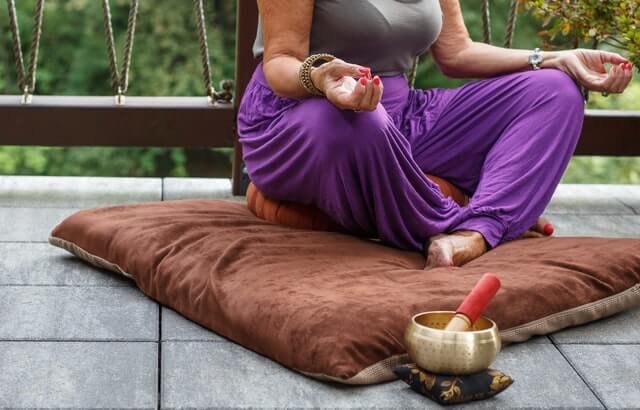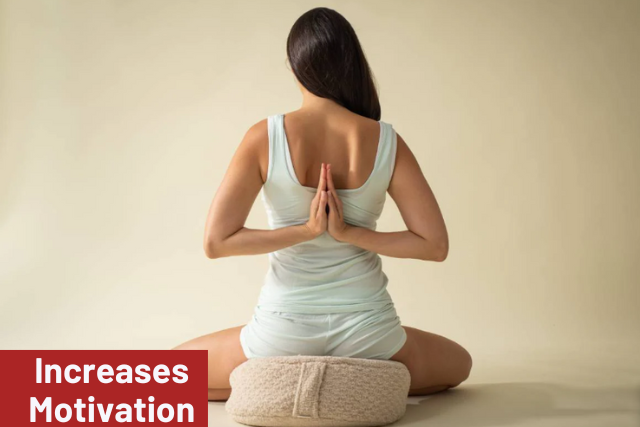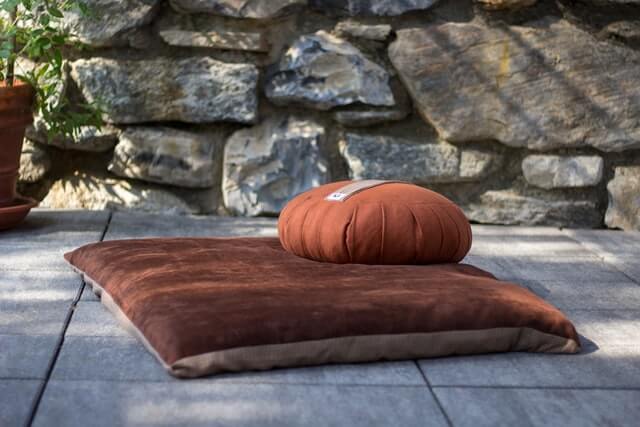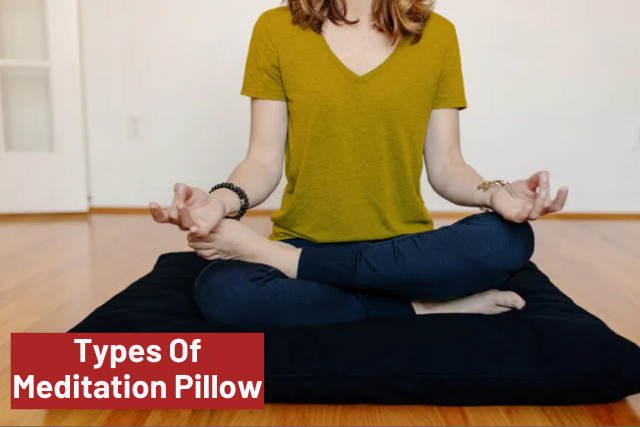
Meditation has proved time and time again to be an excellent cure for people to regain the much-needed positive energy and focus in their already stressful life. It’s not only good for mental and spiritual well-being, but it’s also as effective in boosting your physical body as well.
Much of the meditation techniques incorporate a particular sitting posture that’s believed to help increase the positive outcomes from your practice. However, sitting in whatever meditation position you prefer for an extended period can become unbearable, especially if you’re sitting on a hard surface.
This is where a meditation becomes handy. Meditation and cushions offer a wide range of benefits, so you shouldn’t start your session without one.
Eight Reasons to Get Your Own Meditation Pillow
1. Provides The Utmost Comfort
The traditional meditation position is the lotus pose. It’s when you sit with an unsupported cross-legged position, sitting tall and maintaining the natural curves of your spine.
Such a position requires a level of mobility in your knees, hips, and ankles, which most people don’t have due to a sedentary lifestyle or desk jobs. As a result, you’ll most likely experience pinching, cramping, slumping, and the ultimate discomfort in your practice.
A meditation should be able to lift your hips, allowing them to roll forward slightly and supporting the natural curve of your back. Once the spine is naturally aligned, the rest of your body will follow.
2. Posture Improvement
During meditation, people tend to sit on the floor, mostly on a yoga mat or carpets. This usually leads to bad posture as you meditate. When sitting flat on the floor, you’re likely to slowly bend your back or slouch as time goes by, resulting in poor posture during meditation.
With a meditation, you’ll have enough support to encourage the pelvis to tilt forward slightly and to open up the hips. This allows the spine to remain in the S-curve without much effort.
This also encourages your body to relax, especially the shoulders, ensuring that your posture is comfortable and upright.
Over time, sitting like this helps strengthen your back and core. It gradually improves your posture that even when not in meditation, you’ll find yourself slouching less and standing taller.
3. Reducing Back Pain
If you’ve been meditating in the wrong position, chances are you’re likely to experience joint and back pains instead of experiencing bliss during sessions. You see, the spine has a definite shape.
When you force it into another form, not only does it affect your posture, but it can also cause pain and discomfort during long periods of meditation. This is why it’s advised that you have proper back support if you spend most of your day seated or you work in an office setting.
Now, for the meditators, a meditation should help in keeping your spine straight. It ensures that strain and pressure on your lower back are minimized while keeping your knees and hip in a proper position.
Without the support of a meditation, your spine curvature is compromised, causing you to feel pain and discomfort in just a short amount of time. Plus, it’ll likely lead to future issues if left alone.
4. Helps You Stay Focused
You have a lot of options on how you meditate as well as several intentions for your practice. Regardless, you need clear focus and awareness to truly reap the benefits of your meditation session. A meditation pillow can help in different ways to clear the mind and help you stay locked in.
For one, since a good meditation cushion can help reduce discomfort and pain, it allows you to stay focused on what you’re doing. If you’re meditating in a seated position improperly and you start to experience discomfort and pain.
Your focus tends to move on how much longer you have to stay in place. Also, since a meditation pillow ensures good posture, your mind can stay focused on your practice instead of maintaining your position and proper posture.
In addition, unlike a chair-seated meditation, meditating on the floor with a meditation pillow requires you to sit properly without a backrest. This is more beneficial since the mind is more alert, ensuring that you won’t fall into a sleep state instead of a meditative state.
5. Meditate In Different Positions
People think that meditation pillows have only one purpose—you just sit on them in a single position, and that’s it. However, this couldn’t be any further from the truth.
A meditation pillow can be used in a lot of different ways. You can meditate in a number of meditative positions. Plus, you can customize these positions to fit your needs.
To give you some context, here are a few meditative positions that makes use of meditation pillows for support:
Kneeling Meditation
Kneeling is a popular pose for meditation. One advantage of this pose is it’s much easier to keep your back straight.
However, kneeling meditation can quickly become a pain without enough support, especially for those with sensitive or injured ankles or knees. Using a meditation pillow can provide support between your knees.
It also helps remove pressure and strain on your joints and promote proper circulation in your legs, preventing limbs from falling asleep.
Full Lotus
A full lotus pose means your legs are crossed with both feet resting on top of your thighs. Even the more advanced meditators can quickly feel discomfort doing a full lotus for long periods.
With a meditation pillow, it makes it easier on your knees and hips, allowing for a better opening of the knees, ankles, and hips.
Cross-Legged Pose
A cross-legged pose is easier on those with joint problems or a more comfortable alternative to full lotus for the newbies. It helps minimize the strain on your joints while stretching your knees and opening your hips.
A meditation pillow can help maximize the benefit of this position by keeping you from rounding out your back and having your spine in good alignment for longer sessions.
6. Double As Yoga Props
Yoga and meditation are closely related, going hand in hand together. In fact, most people will usually start practicing meditation then practice yoga after or vice versa.
Yoga is meant to be done in a meditative state. With that said, a meditation pillow can come in handy for maximizing your yoga practice. It improves your flexibility and it can feature several positions.
So, if you need somewhere to rest your knees, legs, or hands during yoga or need something as a bolster, a meditation pillow can be an excellent yoga prop.
7. Portability
If you travel a lot, a meditation pillow can help you create a meditation space whenever you need it. Most pillows are super lightweight and can be carried anywhere. Even inflatable ones can make it possible for you to have them in your bag or pocket.
Whether you want to meditate in a hotel room, in the park, or at your workplace, you can set up your meditation pillow and instantly carry out a short meditative session.
8. Increases Motivation

For the newbies, something around the house that can get you in the mood to meditate can be of great help.
Just as getting a yoga mat helps enforce your practice and prevent more excuses in not doing yoga (discomfort in doing kneeling poses or slipping on the floor), having a meditation pillow can help motivate you to start meditating.
Also, having a meditation pillow can remind you of the times you sat on it and come out feeling refreshed and optimistic. Having a physical representation of your practice may help push you to get up and start meditating.
Choosing A Meditation Pillow: Factors To Consider

Now that you understand the incredible benefits of a meditation pillow, you’re probably wondering how to choose the right one for you. There are certain considerations you need to keep in mind:
1. Types Of Meditation Pillow

There are some variations when it comes to meditation pillows. In general, they’re seen in four types. Here are the following:
Zafu Pillow
This is perhaps the most traditional style of a meditation pillow. It’s originated in China and has since become a fixture of Zen meditation.
The most classic style of a zafu has a round pleated design. You set on the curved edge of the pillow and let your legs fall off, creating a natural slope that’s conducive to sitting cross-legged.
Most Zafu pillows are around 4-6 inches, which is the perfect height for holding your pose for extended periods.
Rectangular Meditation Pillow
For the complete novice, a rectangular meditation pillow is a great option. These cushions are around the same height as the Zafu pillows but have a fuller shape and are more stable.
This type is forgiving for those struggling with stiff hips or lacking in mobility. However, it doesn’t offer the same knee support as other kinds.
Crescent-Shaped Meditation Pillow
This kind of pillow offers a wider base for the thighs and hips, making it suitable for those with chronic lower back or knee issues and those with limited mobility.
The natural slope of a crescent-shaped pillow encourages better alignment since you don’t need to maintain a specific position on the cushion for proper posture.
Like Zafu pillows, this type offers great knee and ankle support. However, for taller individuals, the knees can become elevated even with a seated position on this cushion.
Foldable Pillow
If you like a bigger but portable cushion, you can get foldable pillows. These meditation cushions can be folded out flat or you can also fold them so there’s enough back support (should be propped against a wall).
You can also fold this in half for more elevation, offering more comfort, especially for the taller individuals.
2.Pillows Stuffing Materials
In terms of stuffing, meditation pillows have several materials:
Kapok Fibers
If you’re looking for stable support, then kapok fibers are your best option. It’s a common alternative for silk, offering durability and strength, and can hold its shape over time. This naturally occurring fiber also contains antifungal and antimicrobial properties, ensuring that your pillow stays hygienic.
Buckwheat Hulls
These are organic shells that provide a flexible and softer base. Pillow filled with buckwheat hulls conforms to the shape of your body, ensuring a proper fit.
It also creates a unique, grounded feeling, making it a preferred choice for most people. Unfortunately, it can be noisy and cause distractions in your meditation.
Wool
A more lightweight alternative, wool is prized for its energy-insulating properties. It tends to be highly comfortable and much softer than kapok and buckwheat.
Other commonly used materials for meditation pillows include cotton, polyester, and air for the inflatable ones.
3. Height And Adjustability
One size can’t fit all, and the standard meditation pillow ranges from 4-7 inches. However, the optimal pillow height for you is correlated to your physical height and meditation practice.
The taller you are, the higher the pillow you need. And for beginners, a higher cushion height is preferred, but as you adjust your posture, you might need to lower the height.
For this reason, you should consider an adjustable pillow as it saves you money and space in purchasing several pillows. Some meditation pillows allow you to refill or remove buckwheat hull and kapok fiber filling for adjusting the height.
4. Pillows Durable And Smooth Cover
You want to sit comfortably on a meditation Cushion and use it for a long time. Thus, you need to look for a sturdy and wear-resistant cover.
Cotton canvas is usually used for most pillows, providing a soft texture. Also, you’ll be washing the cover every now and then, so make sure the cover’s fabric is durable enough to withstand regular washing.
Conclusion:
A meditation pillow isn’t just an accessory for your meditation sessions. Pillow offers you several benefits, particularly in providing you with the utmost comfort and perfect posture during your meditative session.
